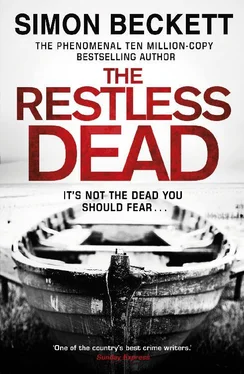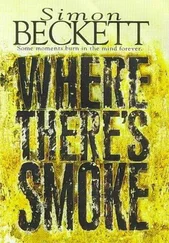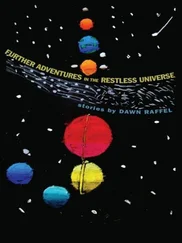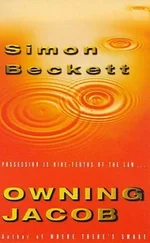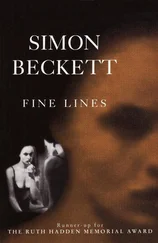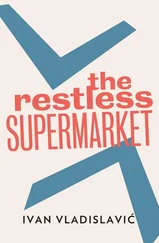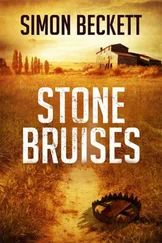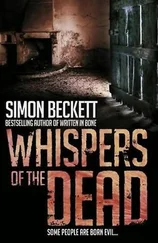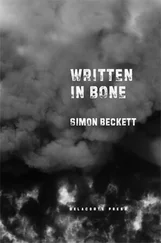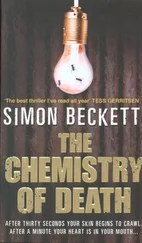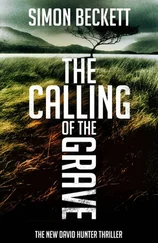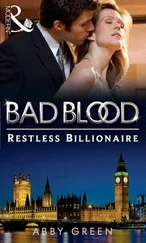Clarke had asked me to stay at the mortuary after I’d established that the detached foot belonged to the remains from the Barrows.
‘If this isn’t Leo Villiers then I want to know who the hell it is,’ she’d said before she and Lundy left. ‘Age, ancestry, anything to help us narrow down the ID or time-since-death. Can you help with that, Dr Hunter?’
‘I’ll do what I can,’ I told her, and turned to Frears. ‘Did you find any blowfly pupae or casings trapped in the clothes?’
‘No, but if it’s been in water I wouldn’t expect any.’
Neither would I, but that was the point. Blowflies are incredibly persistent. Even in winter, a small amount of sunshine can raise the temperature enough to bring them out. But they can’t lay eggs underwater, and although the body had been exposed during low tide, no eggs laid then would have survived the subsequent immersion. So if there had been any sign of blowfly activity, it would have meant the remains had been on the surface for longer than the interval between tides. That would significantly skew the rate of decomposition, and therefore the length of time-since-death.
If there were no blowflies, at least we could rule that out.
While Frears went to carry out the post-mortem on the remains from the barbed wire, I set about the grisly task of my own. I don’t think any of us seriously doubted any more that Villiers had faked his own death. What had started out looking like a suicide had suddenly turned into a murder inquiry, and this time there was a body tying him to it.
Not even his father’s lawyers could argue that away.
I was optimistic that I’d be able to provide Clarke with more information about the unknown man found in Leo Villiers’ clothes. I started by looking at the X-rays taken before the post-mortem. The hammertoes of the foot from the training shoe had suggested this was an older individual, but what I could see of the body’s joints on the X-rays told a different story. They looked in good condition, with virtually no age-related degradation.
I thought about that as I studied the X-ray of the foot. The second toe in particular was badly deformed, and if age wasn’t a factor that meant the cause must be either congenital or occupational. Looking at that second toe, I thought it was probably the latter. But to find out more would involve examining the bones themselves, and there was only one way of doing that.
Denuding a decaying human body of any remaining soft tissue was never pleasant. Wearing a rubber apron and thick rubber gloves, I removed as much of it as I could with a knife and scissors, cutting it away as close to the bone as I could without touching it. It would be stored with the organs and rest of the body for later burial or cremation, once we’d extracted as much information as we could.
What remained on the examination table was a grisly stick-figure, more anatomical caricature than human being. Even then I hadn’t finished. I carefully cut through the cartilage at the joints, gradually disassembling the remains like the carcass of a chicken. The disarticulated body parts went into large pans of weak detergent solution, which I left to simmer overnight in a fume cupboard. Sometimes stripping the skeleton in this way could be a time-consuming business, involving repeated soakings in warm detergent and then a degreasing agent before it was ready to be examined. But that wasn’t necessary when the remains were as decomposed as these had been, especially since their long immersion in the creek had started the process anyway. By morning the bones should be clean enough for me to examine, and hopefully give Clarke more information.
Once the pans were gently simmering away, there was nothing more I could do. I’d gone to find Frears but Lan, the young APT, told me he’d already left. Evidently the post-mortem hadn’t taken long, but that was no surprise. A pathologist would struggle to learn much from a body as badly decomposed as the one from the creek had been.
That was my job.
I’d been disappointed not to have a chance to hear what Frears had found. Even though the circumstances were different this time, it was the second post-mortem I’d missed. But the day’s events caught up with me as I stripped off my scrubs and cleaned up in the changing room. It didn’t seem possible it was only that morning I’d had coffee with Rachel in Cruckhaven. It had been a long day, and the leadenness of my limbs as I trudged along the empty road reminded me I still wasn’t entirely recovered from the infection.
I was glad when I reached the turn-off for Creek House, although the thought of seeing Rachel again brought nervousness as well as anticipation. I told myself there was no call for either as I approached the house. The battered white Defender was parked by the copse of trees, but there was no sign of Trask’s grey Land Rover. My own car stood a little way off to one side, an odd note of familiarity in that setting.
I made my way through the trees and up the steps to the front door. I could see a light through the frosted glass panel, a warm, homely glow I knew was illusory given what the family had been through. Then the door was opened and Rachel was standing in front of me.
She looked tired herself but gave me a smile. ‘Hi.’
Without asking, she stood back to let me in. I’d been inside the house earlier to change out of my wet clothes, but I’d not taken much notice then. It was a reverse-level design, with a family bathroom on the ground floor. Other doors led to what I presumed were bedrooms off the hallway. The place had a Scandinavian feel, though it was too lived in to call minimalist. The white walls were scuffed with marks from boots and bike tyres, and an assortment of shoes and wellingtons was clustered untidily on the polished floorboards. A flight of wooden stairs ran up to the first floor, from which I could hear music playing quietly in the background.
‘How’s Fay?’ I asked as Rachel closed the door behind me. I could smell a faint scent of sandalwood. Too light to be perfume, more likely soap or shampoo.
‘Protesting about the injections, which is a good sign,’ she said with a smile. ‘They’re keeping her in overnight as a precaution. None of the cuts are serious but they gave her a blood transfusion, and she had mild hypothermia as well. But Andrew thinks she’ll be home tomorrow. Can I get you a coffee or something?’
‘That’s OK, I only came to collect my things. And to return these.’
I indicated Trask’s jacket, and also the old wellingtons I was still wearing. Rachel saw them and laughed. ‘Yeah, I can see why you’d want to get rid of them. Look, why don’t you take them off and come upstairs for a drink? Andrew’s still at the hospital and Jamie’s gone to a friend’s so there’s no one else here. I’d be glad of the company.’
The hallway was lit only by the glow from upstairs. Rachel wore a short black T-shirt that just came to the top of her jeans, displaying slim, toned arms. There was a tentative smile on her mouth, and her eyes held a trace of uncertainty that mirrored my own. The tension I’d been feeling vanished.
‘Sounds good,’ I said.
I’d expected the living area of the house to be impressive, but Trask had excelled himself. The whole of the upstairs looked to be open plan, sections of it partitioned off with bookshelves to create an illusion of privacy. The slate floor was dotted with an assortment of rugs, and comfortable-looking sofas and chairs were arranged around a wood-burning stove. The largest part of the room was taken up by a sleekly modern kitchen, a low wooden cabinet dividing it from a rosewood dining table with bentwood chairs.
But the most impressive feature was the glass wall that ran along the entire front. Dwarfing the arched window in the cabin, it faced directly over the creek, with floor-to-ceiling panels opening on to a long balcony. Beyond that there was nothing except the darkening sky above a marsh and creek almost lost in twilight.
Читать дальше
